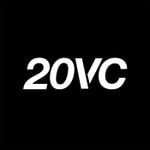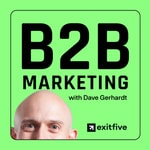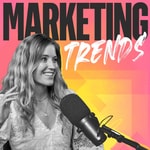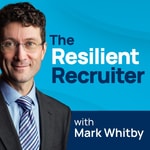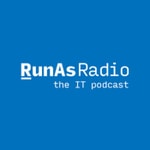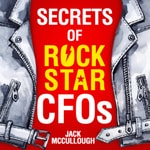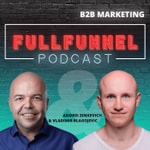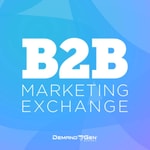Metrics that Measure Up – Details, episodes & analysis
Podcast details
Technical and general information from the podcast's RSS feed.
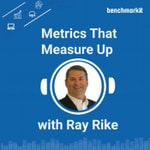
Metrics that Measure Up
Ray Rike
Frequency: 1 episode/9d. Total Eps: 214

B2B SaaS and Cloud founders, CEOs, and Go-To-Market operating executives share their journey as they scaled their business from $0M ARR to $100M and beyond. The guests share their insights on measurements of success, performance metrics, and benchmarks they use to guide and inform their decision-making and growth journey.Guests include founders and CEOs of amazing success stories such as LinkedIn, DocuSign, Marketo, Gainsight, Salesforce Commerce Cloud, ringDNA, InsightSquared, Cloudera and Gong. Beyond founders and CEOs, we also speak with leading Venture Capitalists, Go-To-Market executives and industry thought leaders who share their experience and insights into customer acquisition, customer retention, and customer expansion best practices.
Recent rankings
Latest chart positions across Apple Podcasts and Spotify rankings.
Apple Podcasts
🇺🇸 USA - management
28/07/2025#31🇺🇸 USA - management
27/07/2025#34🇺🇸 USA - management
26/07/2025#35🇺🇸 USA - management
25/07/2025#32🇺🇸 USA - management
24/07/2025#33🇺🇸 USA - management
23/07/2025#34🇺🇸 USA - management
22/07/2025#25🇺🇸 USA - management
21/07/2025#21🇺🇸 USA - management
20/07/2025#18🇺🇸 USA - management
19/07/2025#17
Spotify
No recent rankings available
Shared links between episodes and podcasts
Links found in episode descriptions and other podcasts that share them.
See allRSS feed quality and score
Technical evaluation of the podcast's RSS feed quality and structure.
See allScore global : 59%
Publication history
Monthly episode publishing history over the past years.
Corporate Gifting and the Impact on Pipeline Performance - with Kris Rudeegraap , Co-Founder and Co-CEO Sendoso
mercredi 18 septembre 2024 • Duration 24:48
Kris Rudeegraap, co-founder and co-CEO at Sendoso viewed the emergence of Sales Engagement Platform technology as the beginning of the end for email based outbound demand generation for B2B Sales professionals. This catalyzed him to take the leap to cfound Sendoso, a next-generation direct mail and corporate gifting platform. In today's conversation, we will discuss the history and business impact of Sendoso and corporate gifting including:
- The catalyst for founding Sendoso
- The current State of Pipeline Generation
- The impact of corporate gifting on Pipeline Generation
- The impact of corporate gifting on Customer Retention
The first question we discussed was the most surprising learning Kris has had as a first-time founder and CEO. Kris highlighted that even after 8 years he is still as passionate about the business and vision as ever, and he found that his background in Sales has been extremely valuable in both recruiting employees and raising over $150M in Venture Capital funding. Kris highlighted that there were several similarities between conducting a fundraising effort and enterprise-class sales. One of the advantages Kris felt he had due to his background in sales and that his "founder-led sales" efforts became direct inputs to the product roadmap.
Next we pivoted to the reality of today's pipeline generation. First, Kris highlighted that with so many email sequencing tools and now AI tools to send emails that buyers are becoming numb to demand generation emails, as their inboxes become saturated.
A common recommendation that Kris provided to any B2B Sales professional is to make every outreach, be it email or a corporate gift to ensure it is personalized to the target buyer. One advantage of corporate gifting is due to it being more expensive than sending an email, the majority of organizations and sales professionals are much more targeted and personalized when sending a "physical gift" to a target prospect.
Kris shared that they use the power of AI to determine what type of physical gift would most resonate with different buyer types based upon function and/or title. Next we move onto the performance metrics behind the use of corporate gifting as a key component of pipeline generation programs.
Kris shared that corporate gifting programs increase pipeline generation programs as measured by the following benchmarks from research by HockeyStack:
- 3x increase in meeting rates
- 6x increase in second-call rates
- 1.84x increased win rates
- 13% larger deals
- 29% faster sales cycle length
If you are responsible for generating pipeline in your company, or for managing the budget allocation to grow revenue profitably, this conversation with Kris provides a lot of great insight into the Return on Investment of integrating corporate gifting into your new customer acquisition and customer retention programs.
See Privacy Policy at https://art19.com/privacy and California Privacy Notice at https://art19.com/privacy#do-not-sell-my-info.
Virtual Product Tours and Demonstrations - with Andrea Wunderlich, Maxio
lundi 9 septembre 2024 • Duration 29:48
How have product demonstrations evolved in today's buyer self-directed buying process? Andrea Wunderlich leads the product and customer marketing function at Maxio and recently introduced their virtual product tour. In today's self-directed buyer journey, it's good to break down how virtual product tours can be leveraged to serve the buyer, when and where they prefer.
During this episode, several topics regarding launching a virtual product tour center include:
- The Genesis of the Maxio Virtual Tour Center
- Overcoming concerns of competitors knowing about your product feature/function
- The opportunities and challenges of leveraging “open source” demonstration venues and channels
- Measuring the impact of buyer self-directed solution tours
When should a product demonstration be used in a considered B2B selling environment? Andrea highlighted the commonly used process of first doing a discovery call and then moving into a demonstration call. Over the past two years, corporate buyers have wanted a more "B2C" buying experience and the sooner the better is the time to show the basics of the software and then move into a more tailored demonstration once the vendor better understands the unique requirements of a specific customer. If 65% - 70% of the buyer's journey is completed before they speak to a salesperson - why not ensure the potential buyers can understand the basic feature/function of your software?
The genesis of the Maxio Virtual Tour Center was introduced by a new marketing hire who highlighted the trend for B2B SaaS companies to offer a virtual product tour to ensure potential buyers do not "self-qualify out" before they see the details of the product's capability. Using video is an expensive option, and in addition as products evolve quickly the entire video often needs to be recorded again and again. A virtual product tour platform primarily uses product screen shots and if a feature evolves, only one screenshot needs to be updated, and it is automatically inserted into the existing virtual product tour. A KEY criteria to make the virtual product tour successful was having a champion who was passionate about making the virtual environment a reality.
Gated or non-gated virtual product tours? Andrea strongly believes that removing all friction to get potential buyers to engage early in the buying process is critical to ensure that many companies can understand the product's features and function. Experiencing the Maxio solution without having to engage with sales was a key criterion to providing a low-friction, non gated approach to the virtual product experience.
One of the interesting findings was the product tour center is used more in the middle of the funnel, versus a top of funnel first-time experience. Maxio has found that the tour center is used and then shared more by potential customers after a first sales call. With the target buyers of both the CFO and the product leader thinking about how to monetize (bill) their product, the virtual tour center was a better way to get the majority of the buying committee members to understand the capabilities of the product.
How to measure the business impact and value of a virtual product tour center? One of the hard things about trying something new is the long tail aspect of the virtual product tour. Andrea highlighted that expectations were set that this would be at least a six-month timeframe before the ROI could be validated and that with the virtual product tour being a lower-cost initiative, the longer term ROI was acceptable. Initially, the engagement rate was the primary measurement, and then over time (6+ months), they could look into their attribution tool to see how the virtual product tour users were converting into qualified pipeline and new ARR.
If you have a SaaS product and you are looking for new, innovative ways to get the potential target buyers to understand how your product aligns with their unique requirements - this is a great conversation to hear!
See Privacy Policy at https://art19.com/privacy and California Privacy Notice at https://art19.com/privacy#do-not-sell-my-info.
2024 B2B SaaS Sales Benchmarks- with Sally Duby, Chief Sales Officer - The Bridge Group
mardi 2 juillet 2024 • Duration 34:23
Sally Duby, Chief Sales Officer at The Bridge Group shares the latest SaaS Account Executive Benchmark Report based upon their research which they have been conducting since 2007.
During the episode we cover a wide array of topics and benchmarks from the report including:
- Account Executive Compensation Trends (OTE, Base Salary and Commissions)
- AE Quota Trends - By Annual Contract Value
- AE Quota Achievement Trends
- Win Rate Trends
- Expansion and Renewal Responsibilities
The full report is available by clicking here.
If you are responsible for hiring, managing. modeling AE comp plans or have Account Executives in your company, this conversation and report is full of new insights and trends on the state of B2B SaaS Account Executive metrics trends and benchmarks!
See Privacy Policy at https://art19.com/privacy and California Privacy Notice at https://art19.com/privacy#do-not-sell-my-info.
Marketing as a Sales Productivity Amplifier - with Mark Stouse, CEO Proof Analytics
mardi 7 juin 2022 • Duration 35:24
Marketing as an AMPLIFIER to Sales productivity!!!
The quote above was the primary focus of my discussion with Mark Stouse - the CEO of Proof Analytics.
Mark self-identifies as a communicator turned marketer turned SaaS CEO. Over this journey, Mark has developed a strong perspective on how to prove ROI, especially for marketing investment.
What are the metrics that matter to a Chief Marketing Officer? Mark says this is very straightforward: "Marketing's mission is to help Sales sell more product to more customers faster and more profitably than Sales could do by themselves". Simply stated, it is measured by more deals, bigger deals and faster deals - Deal Velocity! Calculating how marketing measures these should be the primary point of any metric that Marketing captures and reports.
When pushed on the top three metrics, Mark responded that KPIs (data) by themselves are not enough. Data is the measurement of what happened in a particular time for a specific place - ALL in the past. Analytics, specifically regression analysis, enables a marketer to predict and forecast how future marketing investments will impact Sales productivity as measured by pipeline and revenue.
The B2B SaaS industry is still young when measured against other industries such as manufacturing, retail, or consumer packaged goods. As such, the maturity of using sophisticated analytics to predict the future in the industry is still in its infancy - especially compared to larger, more data-intensive B2B online companies.
An example of using data on a more granular level was Ideal Customer Profile (ICP) and Pipeline Coverage Ratio. By understanding how specific cohorts perform in top of funnel conversion, the marketing ROI can be increased materially through enhanced targeting.
Next, we pivoted to Mark's concept of Marketing exponentially impacting Sales productivity. Mark has an interesting take on the concept: Marketing should invest more time helping Sales improve conversion rates in the middle and bottom of the opportunity funnel versus primarily being focused on top of funnel market engagement. Mark used a military analogy where the Air Force provides air cover to the ground troops.
Why does Mark believe the above? Marketing has conditioned business leaders to think that Marketing is primarily a brand awareness and engagement function versus a selling process amplifier. Mark highlighted TRUST as a key ingredient to enhancing conversion rates and accelerating deal velocity. What drives a buyer's confidence - trust is a crucial ingredient to building buyer trust. The more confidence a buyer has that a company and their product will impact their buying process, measured by win rate and sales cycle time.
As a marketer, a pivotal question is what are we doing to increase the buyer's confidence and trust, resulting in helping Sales close more deals faster!
If you are interested in hearing thought-provoking ideas on how Marketing can use data and analytics to enable Marketing to become an exponential multiplier to Sales productivity - this conversation with Mark is fascinating.
See Privacy Policy at https://art19.com/privacy and California Privacy Notice at https://art19.com/privacy#do-not-sell-my-info.
The Importance of SaaS Benchmarks - with Sam Baker, Scale Venture Partners
lundi 23 mai 2022 • Duration 33:57
Sam Baker, Principal at Scale Venture Partners, has been a venture capitalist for six years. Before that, he gained operational experience at Box in both an Inside Sales role and in a Strategy and Planning role.
Scale's culture has a very quantitative-oriented DNA, including having its own benchmarking organization known as Scale Studio. Benchmarking delivers reality to every Scale portfolio company and aligns the founder and the investor on a metrics-oriented approach to decision making.
The first topic we approached was what metrics are most important to a Series A and Series B investor? Sam's initial response was not to rattle off a list of metrics but to discuss the importance of "context" in today's investment environment. As an example, Sam shared that the "maturity" of the company is a primary driver of how best to use metrics.
Scale has identified and uses four (4) Vital Signs of SaaS that include: 1) Growth; 2)Efficiency; 3) Churn, and; 4)Burn. A small description of the four vital signs below:
Growth - How quickly is revenue growing
Efficiency - Quantity of revenue compared to Sales and Marketing spend
Churn - Do customers stick around and buy more, OR do they leave
Burn - What is the rate of cash consumption to grow a SaaS company
When asked about a benchmarking framework that Scale uses - he first highlighted it depends on who is consuming the benchmarks (which role) and what is the stage and maturity of the company. Scale's benchmarking framework is very extensible to enable an increased aperture on the metrics being utilized. For example, when a company dramatically increases investment in Sales and Marketing, Customer Acquisition Cost efficiency metrics become more important.
Next, Sam recommended avoiding benchmarking and metrics overload, which requires a company to identify the most important and most informative metrics to how the company is currently trending and will be trending in the near term. Moreover, be prepared to add or change metrics that are most relevant to the growth stage.
Scale has a couple of unique metrics, including Instantaneous Compound Annual Growth Rate (iCAGR). The benefit of iCAGR is it provides a real-time and is most sensitive to growth or shrinkage today, versus being biased by the average effect of quarterly or annually metrics. As an example, if growth is down in the most recent quarter, but the previous three quarters had higher than normal growth it can identify potential risk or new trend in company performance.
Another metric that Scale uses is "Growth Persistence" which investors use to measure the rate of growth over time. For example, if a company grows 100% one year, and then 85% in year two and 72% in year three, it would reflect an 85% median growth persistence.
How to avoid "metrics overload"? This is especially important in board meetings when the "metrics creep" can often happen. First, make sure everyone knows the company's "North Star" and how each metric directly impacts the North Star. Second, gain agreement up-front with the investors and board members on those metrics that are most important, that they are presented in a manner that is easy to understand and ensure the metrics tie back to the source systems being used.
Sam provides a very insightful and instructive perspective on using metrics and benchmarks to inform a SaaS company's growth journey - especially from an investor's perspective, which is so critical in the 2022 investment environment.
See Privacy Policy at https://art19.com/privacy and California Privacy Notice at https://art19.com/privacy#do-not-sell-my-info.
The 360° Customer Journey with Carson Conant, Founder and CEO Mediafly
mercredi 4 mai 2022 • Duration 28:39
Everyone talks about the "Customer Journey" but often operates in stage-by-stage silos of customer acquisition, retention, and expansion.
What is the Customer Journey - first, it often depends on if you come from a "Buyer perspective" versus the "Seller perspective." Ultimately, the seller is trying to figure out how to turn the buyer's meandering journey into a more liner, faster buying journey...sounds like an adversarial relationship using this model.
One interesting aspect of today's buying journey is how to optimize how Marketing, Sales, and Customer Success collaborate across the customer journey. The early phase can feel disjointed to the customer as they engage with a vendor using multiple "marketing-led" experiences that are not well understood by the Sales Development and/or Sales resource, who often do not know the knowledge and experience the prospect already has from self-directed research.
Does having shared goals and metrics across Marketing, Sales and Customer Success impact the customer experience? Having an "Account Energy Score" may assist in aligning the functions across the customer journey. It can also inform the probability of a prospect becoming a customer. The Account Energy score factors in signals at each stage of the journey and weight specific actions such as content engagement or activities based upon the stage of the journey, such as Customer Acquisition vs Customer Retention vs Customer Expansion.
Though there is never a "magic bullet" that can guarantee a prospect becoming a customer, being able to dynamically score each point of engagement depending on the latest understanding of how each signal correlates to customer journey progress is a material increase in insights versus today's standard models.
In the "tough question category," is it the seller's responsibility to follow the buyer's journey OR to try and help guide and lead the prospect to make the best purchase decision? Carson's perspective is it is better to lead the buyer through the process by understanding the buyer's actual needs and being willing to stop the process IF their solution is not in the best for the buyer.
Another key point is there is NO single customer journey or buying process, so it's critical to always be listening to the prospect and align plus help guide the buyer through the process.
In today's "land, retain and expand" customer lifecycle process in the SaaS industry, having a 360 degree view that is informed by every signal that impacts the customer journey is a best practice. It is also a best practice that requires tight integration of your Marketing, Sales, and Customer Success team aligned to the customer journey.
If you are interested in learning more about today's customer journey, and how to use their engagement as input to your forecast, and to better inform your internal resources on the best next action, this conversation with Carson is highly informative.
See Privacy Policy at https://art19.com/privacy and California Privacy Notice at https://art19.com/privacy#do-not-sell-my-info.
The Revenue Operations and Sales Development Partnership - with Taft Love, Iceberg RevOps
mardi 26 avril 2022 • Duration 32:44
Taft Love's journey to becoming a Revenue Operations leader started in law enforcement, with a pivot to starting his tech career by becoming a Sales Development Representative, on to direct sales, sales leadership and ultimately to Revenue Operations.
This journey is exactly the cross-functional experience that builds a strong foundation to being a strategic revenue operations leader. Interestingly, Taft's experience as a sales lead at early stage B2B SaaS company, PandaDoc by identifying and then having to solve operational challenges that impacted his productivity.
When should a company consider a RevOps function? Taft's perspective is that RevOps starts with ensuring the revenue technology platforms and processes are aligned and optimized to the need of the front line sales personnel. Simply stated, start the RevOps journey with a RevTech resource and as you grow to $5M - $15M (Series B) start considering a RevOps team that has broader responsibility beyond managing revenue technology platforms.
As we discussed the RevOps framework of data, platform, process and analytics Taft doubled down on the "rev tech stack" administration is the initial catalyst to creating a RevOps team. When pressed on the traditional approach to bringing in a Salesforce administrator and then the marketing automation administrator - often positioned as a Sales Ops and Marketing Ops resource, Taft continued to support his belief that RevOps should not be the first ops resource brought into a company.
Next we discussed the pro's and con's of starting the RevOps journey with an internal hire versus leveraging the expertise of a RevOps agency. Taft's insights are that no one single RevOps resource can be good at every component of a RevOps function. Examples include trying to have the same single resource be a platform administrator, data guru, business analyst and technical integration expert.
Taft's recommendation is to bring in a RevOps leader, who is the RevOps architect and also work with an agency that can bring the right experience and expertise on an "as needed" basis.
Next we discussed why Sales Development can benefit the most from a close partnership with Revenue Operations. Sales Development productivity is directly impacted by having the right "target prospect" data, the ability to conduct high quality outreach at scale and ultimately being able to fuel the engine of company growth - pipeline development!
Recent research has shown that only 49% of an SDR's time is spent on outbound prospecting because they spend the majority of their time on administrative and operational activities, such as data management, list development and contact enrichment, that are the primary domains of a Revenue Operations function.
If you are considering an investment in your first Revenue Operations function or how to leverage your Revenue Operations team to increase revenue activity productivity, Taft is a great listen.
See Privacy Policy at https://art19.com/privacy and California Privacy Notice at https://art19.com/privacy#do-not-sell-my-info.
Todd Gardner - The rise of Usage-Based Pricing in B2B SaaS
mardi 5 avril 2022 • Duration 34:48
SaaS Capital - I have always loved that name and followed their B2B SaaS Research for many years.
Todd Gardner was a founder at SaaS Capital, which helped lead the early days of "Debt Lending" for SaaS companies. Most recently, Todd is now the principal at SaaS Advisors assisting both SaaS companies and SaaS investors during the financing process.
During Todd's career, he has reviewed thousands of SaaS income statements and balance sheets which positions Todd very well for the business and financial impact of Usage-Based Pricing (UBP) for B2B SaaS companies.
The first topic we discussed was "What is Usage-Based Pricing"? The concept is pretty basic, aligning pricing to the value received by the customer. This concept has been used in other consumption-based industries, such as gas, water, and cellular phone bills.
How does UBP impact the traditional use of subscriptions? Approximately 50% of SaaS companies using a Usage-Based pricing model also include an annual subscription as part of the pricing structure....a hybrid model. One interesting aspect when using a UBP + Subscription model is what is included in the subscription versus being purely usage-based charges?
One of the challenges of a Usage-Based Pricing model is the increased challenge of revenue forecasting - which was one of the benefits of the traditional SaaS subscription model. Todd highlighted there is a trade-off in pricing between simplicity and value alignment. By having a hybrid Usage-Based Pricing model, there can still be the predictability of the subscription model while still having the opportunity to increase revenue as value increases for the customer.
Is there a history of Usage-Based Pricing in a software subscription model? In the spirit of all things being circular, the original use of UBP was in time-sharing, which was a popular software application usage model in the 1980s. One of the challenges in that phase of subscription software was once usage increased to make the monthly cost-prohibitive or after a couple of unexpected large invoices from higher than normal/expected charges. Todd highlighted that with the introduction of the Customer Success organization, coupled with the use of product analytics, a SaaS vendor can stay in front of sustained "larger than expected" invoices and even use increased usage to re-structure the agreement to either "cap" overage usage and/or decrease the per-unit cost in consideration of a larger commitment.
Todd recently conducted research that identified 6 product attributes or leverage points that suggest considering a Usage-Based Pricing model:
1. Lower in the technology stack products (infrastructure, databases, tools, platforms, etc.)
2. Application products that have a high Cost of Goods Sold basis
3. Use of the product is directly linked to business value (payments, eCommerce)
4. Self-provisioning products (think Product-Led Growth)
5. Growth and intensity of usage (high growth, heavy usage-based products)
6. Value is driven by automation - such as integration/API based products
Todd has a unique perspective on the SaaS industry, informed by reviewing and lending to 1,000's of SaaS companies, and his recent research on Usage-Based Pricing across the SaaS industry is the basis for an information-packed conversation.
See Privacy Policy at https://art19.com/privacy and California Privacy Notice at https://art19.com/privacy#do-not-sell-my-info.
Expanding the Sales Engagement Platform Vision - with Kyle Porter, Founder and CEO Salesloft
mercredi 23 mars 2022 • Duration 36:37
Kyle Porter, the founder and CEO of Salesloft, started the company over ten years ago. The goal was to have sellers "loved by the customers" they serve.
An initial observation was that it was difficult to deliver a personalized customer engagement experience at scale, thus the catalyst for Saleloft and the Sales Engagement category.
The future of Sales Engagement? All professionals who are responsible for driving revenue will be able to log into a single system, have a pre-defined queue of activities that is populated and prioritized automatically by the platform, automation to assist in executing those activities and measure the success of those activities...all while using the activity success to learn over time.
The ultimate result, eliminate the subjective approach to prioritizing activities while increasing operational efficiency by automating a majority of those activities.
Why has Sales Engagement traditionally been a tool for Sales Development, and will its use be expanded to other Go-To-Market roles? Originally it was easier to "codify" the SDR role because is was such a new role. Going forward, using machine learning and AI, Sales Engagement utilization will quickly evolve in the Account Management and Customer Success functions.
One of the most significant challenges that Sales Engagement Platforms have addressed is the amount of time an outbound sales resource actually invests in outbound prospecting. Recent research says that Sales Development Representatives are currently only spending 49% of their time on outbound prospecting. Increased utilization + enhanced functionality in Sales Engagement Platforms will reduce the time invested in manual, internally facing tasks.
Can a Sales Engagement Platform impact the middle of an opportunity funnel? Kyle's vision highlighted a "post-loss" cadence as one example of how a Sales Engagement Platform is used at the bottom of the funnel to inform future opportunity management. Another example was a post won communication cadence from the CEO to new clients.
Customer Success is a critical, high-value function in the B2B SaaS industry - how can a Customer Success Manager use a Sales Engagement Platform? One example was using product analytics, such as an account engagement or usage, and using specific signals to launch an email to assist users in an automated sequence.
How to measure the return on investment on Sales Development? Kyle's perspective is that moving the goal beyond scheduling a single meeting as the primary objective, such as scheduling 10 meetings in a large strategic account to gather information that can be used by the strategic account AE to schedule a meeting with an executive based upon the discovery information the SDR gathered across multiple meetings.
One of the key benefits of a Sales Engagement Platform goes beyond a single user but to a team-based outreach program across two or more resources, such as the SDR + AE.
We closed the conversation with Kyle on the key challenges and obstacles that Salesloft faced in becoming a leader in the Sales Engagement Platform category. The one that Kyle focused on was the need to develop his leadership skills.
"Learn faster than the rate of my own experience" was a phrase Kyle used to become a continuous learner and not be limited by negative labels - such as "he's a $1M - $10M ARR CEO". Kyle uses 360-degree reviews as one strategy to learn from his company where he needs to grow. Other tactics Kyle uses to fuel his continuous learning are forums with other CEOs, having a CEO coach, and reading.
If you are using a Sales Engagement platform or want to learn from someone who has scaled to $100M ARR+, Kyle Porter is a great follow and listen!
See Privacy Policy at https://art19.com/privacy and California Privacy Notice at https://art19.com/privacy#do-not-sell-my-info.
The State of Sales Enablement - with Dave Lichtman, Founder and CEO Enablematch
mardi 15 mars 2022 • Duration 33:24
The Great Resignation has been a trending topic for six months - how does a B2B SaaS company prepare for the impact?
Sales Enablement is one strategic function that will be a key component to combat attrition and ramp new sales hires to productivity...quickly
Dave Lichtman has been a sales trainer, a sales professional at Salesforce and a sales leader at Sales Enablement platform vendor, SalesHood.
We first discussed how Sales Enablement evolved during the pandemic. First, most sales playbooks had to be thrown out the door, and companies had to re-train and enable a new "virtual sales process" and Sales Enablement was front and center to that new reality.
Dave has seen compensation packages rise dramatically due to the increased need, and many Sales Enablement professionals are seeing total comp packages in the range of a Senior Director or VP Sales.
When to first deploy a Sales Enablement function? First, ensuring Product Market Fit and having an initial repeatable sales process need to be established. Once that happens, it is good to invest in Sales Enablement to scale sales....revenue level is secondary to ensuring these two factors are solid.
How has the delivery model changed for Sales Enablement? The common foundation was ensuring you could train new sales hires virtually, thus requiring a more robust technology, including a sales enablement platform. Another key trend due to the current levels of sales personnel attrition is ingesting larger groups of new hires simultaneously, which requires a more compressed time to productivity.
Sales Enablement today is aggressively using a hybrid of virtual, instructor led + digital self-directed learning.
So what is the "profile" most in demand for Sales Enablement resources today? Dave shared the top "attributes and experiences" including: 1) Direct sale experience is a plus but not a must...what is a must is being a student of sales. 2) Typically, the first hire is a "team of one" and having previous Sales Enablement experience in standing up the first Sales Enablement team is a critical, must have skill set. Being a Sales Enablement employee is a larger organization is not applicable to standing up a Sales Enablement function. 3) Curiosity is probably the most important personal attribute, while being a "pleaser" who thrives on helping people WHILE also having the ability to gently push back on leadership when a requested direction may be sub optimal. This can lead to taking on too many responsibilities ultimately leading to failure.
Sales Enablement is a team sport, and as such being able to build strong relationships across functions is critical to sustained success. Has Sales Enablement evolved beyond sales, and expanding to functions such as Sales Development, Customer Success and Account Management? A minority of companies have started to expand Sales Enablement to include post sales resources, though the C-Suite has started to view Sales Enablement as a strategic function, and broadening the purview of Sales Enablement.
Dave sees Sales Enablement primarily living under and reporting directly to the Chief Revenue Officer. This will enhance alignment of Sales Enablement to the strategic priorities of the CRO - in Dave's team closer to the sun is an important key to Sales Enablement success.
How to measure the ROI of Sales Enablement? Measure both leading and lagging indicators. Start with the purpose of each program and align to leading indicators such as close rate, competitive win rate, discount rates, ACV, etc,
If you are a Sales Enablement professional, thinking about investing in Sales Enablement for the first time or simply looking on best practices to increase Sales Enablement impact on revenue, the discussion with Dave Lichtman is highly instructive.
See Privacy Policy at https://art19.com/privacy and California Privacy Notice at https://art19.com/privacy#do-not-sell-my-info.
